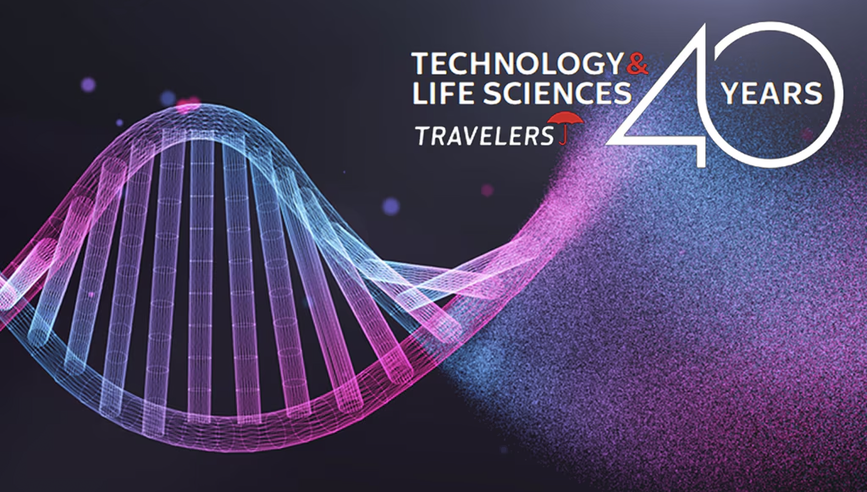Insuring Med Tech’s Evolution


How risks have changed since Travelers entered the market over 40 years ago
Medical technology has evolved at a staggering pace over the past several decades. Advancements have improved patient outcomes and revolutionised diagnosis, treatment, and prevention. But these innovations have also introduced risks.
“As technologies deliver new advantages, they also expose people to new risks, such as efficacy concerns, bodily injury and the potential for breaches of personal data,” said Craig Mounser, practice leader for Med Tech & Life Science at Travelers Europe. “Protection needs to keep pace with innovation.”
Monitoring the advances
Since Travelers entered the medical technology market more than 40 years ago, the industry has transformed. Advances in these areas have paved the way for far greater changes in the years to come:
Imaging and diagnostic tools: In the 1980s, medical imaging technologies such as X-rays, CT (computed tomography) scans, and MRIs (magnetic resonance imaging) were far less advanced than today’s versions. These technologies now provide clearer images that allow for earlier, more accurate diagnosis of conditions like cancer, heart disease, and neurological disorders.
Minimally invasive surgeries and robotics: Surgeons can now use small incisions, cameras, and specialized instruments to perform complex procedures with reduced recovery times and lower risks of infection. For example, the da Vinci Surgical System, introduced in the early 2000s, has enabled greater precision and control, particularly in delicate surgeries like prostatectomies and cardiac valve repairs.
Genomics and personalised medicine: The sequencing of the human genome, completed in 2003, opened the door to personalized medicine. Today, doctors can use genetic information to predict a patient’s susceptibility to certain diseases and tailor treatments accordingly. Analysis of individuals’ DNA may allow doctors to treat patients with targeted therapies that are far more effective than traditional treatments.
Artificial intelligence and machine learning: In the last decade, artificial intelligence (AI) has played a pivotal role in diagnostics, treatment planning, and drug discovery. AI and machine learning (ML) can enhance diagnostic accuracy and personalized treatment plans by analysing large datasets and recognising patterns that may be difficult for humans to detect. AI systems can analyse medical images for signs of diseases such as cancer, sometimes with accuracy rates higher than that of human radiologists. ML models are contributing to the development of new drugs by predicting how different compounds will interact with biological systems.
Understanding the hazards
Alongside the many benefits of medical technology innovation are risks to patient safety, data privacy and security. A faulty chip in a patient’s medical device could disrupt critical treatment or cause injury. An inaccurate algorithm could deliver a false negative reading of a patient’s results, leading to a failed diagnosis and/or the prescription of inappropriate drugs. Inaccurate labelling and instructions may cause a patient to use their medical device incorrectly and inadvertently make their condition worse. Many of these medical devices are connected to the Internet and can be hacked. As a result, cyber criminals gain a host of new entry points to breach when new products come to market.
“Consider the patient safety implications of someone being able to hack into a blood glucose monitor or pacemaker,” Mounser said. “As cyber criminals find new opportunities to launch attacks through medical devices, they gain the ability to cause harm.”
Such opportunities abound. Digital medical records and wearable medical devices have exponentially increased the amount of health data available online. While this data is valuable for improving patient care, it poses a significant risk to patient privacy. Data breaches in healthcare are a growing concern, with cyberattacks targeting hospitals and digital health companies. The exposure of sensitive health information, such as genetic data or mental health records, can potentially lead to identity theft or discrimination.
To access this growing trove of data, cybercriminals attack known vulnerabilities, as well as use phishing and malware to identify new areas to compromise. They continue to evolve their approaches, which requires medical technology companies to be vigilant.
Building protection around the risks
To give medical technology organisations the security they need to manage evolving threats, Travelers provides bespoke products, risk management solutions and claim support.
The main insurance covers required for medical technology organisations include product liability and professional indemnity. Product liability cover from Travelers spans the product development life cycle, from research and development to production and distribution. These protections cover what the medical technology company makes and the services they provide – the product, software, and service. Beyond these covers, a company may also need cyber, product recall, business interruption, employer’s liability, property, and/or general liability cover.
From there, in-house expertise has helped Travelers support clients as new risks emerge.
“Our risk control team helps companies identify potential risks and implement best practices to mitigate them,” Mounser said. “Our claims team has specific experience with med tech and life sciences claims. That’s critical because the medical device industry is highly regulated. Claims in this area are very specialised and require expertise beyond what’s needed to manage the average product liability case.”
That offering is helping Travelers offer clients informed support as their risks change.
“In the more than 40 years that Travelers has been insuring medical technology businesses, we have seen extraordinary advances in technology,” Mounser said. “The next 40 years promise changes that will not only improve the diagnosis and treatment of diseases, but also enhance people’s quality of life and longevity. As we continue to work alongside this specialist industry, we’re eager to provide protection that meets its dynamic needs.”


